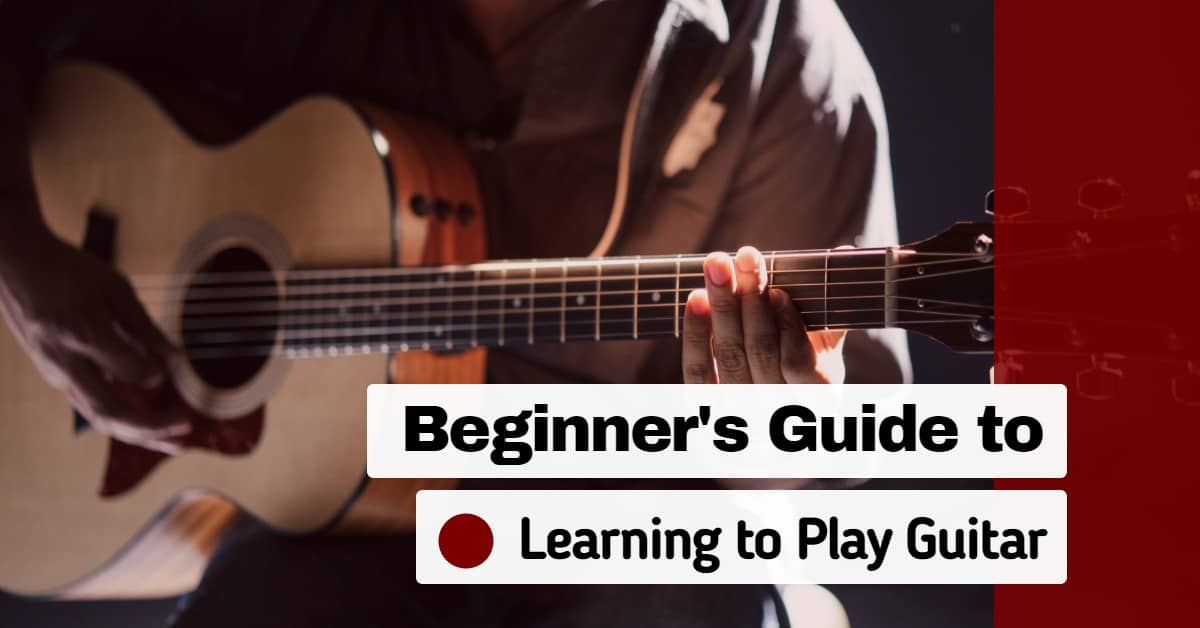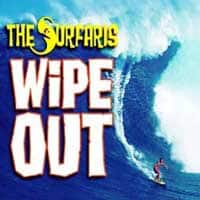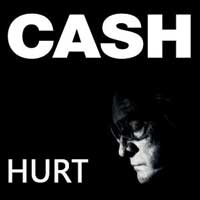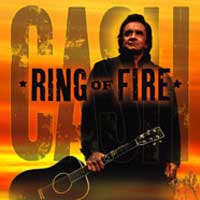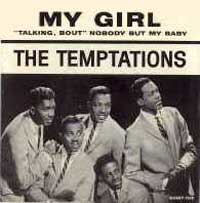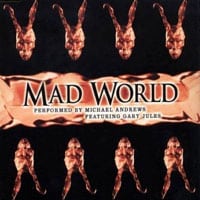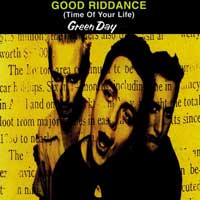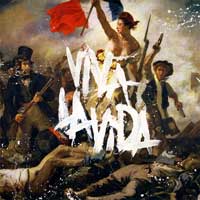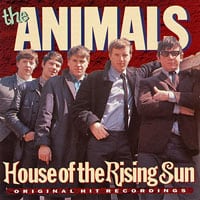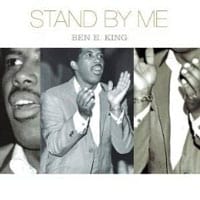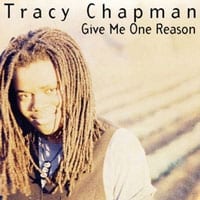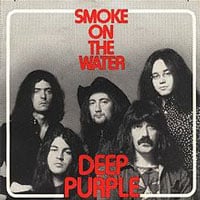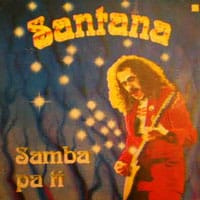Congratulations, your decision on learning to play guitar just might be one of the best decisions of your life.
After teaching 100's of live students and over 130,000 people online, I've gathered everything I know and created this simple-to-follow free beginner guitar lesson course. Yes, it's suitable for both the acoustic and electric guitars.
Now let's get started! And please remember:
Even the best guitarists were beginners at one time, just like you. Slash, Eric Clapton, BB King, Joe Satriani all started out somewhere. Maybe in a chair, just like yours.
Contents of this Free Beginner Guitar Guide
If you follow these guitar lessons developed specifically for beginners, you'll build a rock-solid foundation of guitar skills.
They have proven to work again and again with my on- and offline students.
One very important thing to keep in mind is that the best way to keep your practice sessions fun and motivating is to start playing songs right from the beginning. With each lesson chapter, I'll list several songs suitable for the level you will be at.
Learning these songs will:
- bring life to a maybe not so interesting practice session,
- they'll let you practice tons of practical guitar skills,
- and, of course, playing the guitar is about making music, that's your ultimate goal.
Each chapter will contain the following elements:
Chapter info
The description and goals of the given chapter, and a list of things you'll learn in the process.
Lessons
A list of the video tutorials you'll need to watch, as well as supplemental written material to read.
Song to play
Where the fun begins! Video lessons on popular songs to learn and play, relevant to the chapter.
Before moving on
A list of the techniques you must master before moving on to the next chapter in the course.
1. Tabs and Chord Charts
And your journey begins, how exciting! Learning guitar is not exactly the easiest endeavor of your life, but if you stick with it and devote some time to it, you'll definitely become a good guitarist and enrich your life in so many ways. Remember, playing guitar is an acquired skill, all it takes is practice.
There are a few guitar-specific music notations you need to be familiar with, in order to understand our guitar lessons (and all other guitar lessons for that matter). This chapter will introduce you to tablature, and chord charts.
- Tablature (or tabs for short) are basically music sheets for the guitarist. They differ from traditional music sheets, so it's important to know how tabs work and be able to read them at a glance.
- Chord charts, or chord diagrams will show you exactly how to play chords on the guitar, including the strings, fingerings, and notes to play.
This chapter is more of a primer on tabs and chord diagrams, which you can refer back to later if you see something you don't understand.
Tabs and chord charts are fundamental to learning guitar, so start getting familiar with them.
VIDEO + WRITTEN
This is just an introductory chapter, we'll have a go at our first song in Chapter 2, so stay tuned!
You should be familiar with basic tab notation as well as the structure of chord diagrams.
Don't worry if you can't recite every tablature symbol yet, you'll learn them all as you see them in upcoming lessons. Just remember to refer back to the written lessons in case you don't remember a given symbol when you encounter it.
I want you to leave this chapter in a positive mood, so have a read at my article on how long it'll take to learn guitar.
And if you haven't made up your mind yet, read my thoughts on whether beginners should choose an electric or an acoustic guitar.
2. The Basics
Ok, so now it's time to grab your guitar. The previous chapter was more of a pre-theory session to make sure you'll understand the chord charts and tabs you'll be using not just in these lessons, but for many years to come as a guitarist.
This chapter will focus on getting you familiar with the guitar. It is a wonderful instrument which you'll grow to love, but in the beginning, it'll feel a bit clumsy.
We'll learn the very basics, such as:
- how to hold the guitar
- how to hold the guitar pick (plectrum)
- the parts of the guitar
- and how to pluck individual notes
It is important that from now on, you keep your guitar out where you can see it. You'll pick it up and practice more often if it's in sight, and of course it's a beautiful thing to look at as well.
You've just started, but there are already a few songs you can start practicing! Is that cool or what?!
Wipeout by The Surfaris - This super popular song is one of the first you should learn, it'll really improve your plucking skills and general fretting.
Keep it slow at first, speed will come with time.
And we're on our way! Chapter 1 should take you no longer than a few days to grasp, but of course, becoming proficient at the things you just learned will take much longer.
Make sure you practice at least a half-hour every day. Your fingertips will hurt initially, but it will pass in a few weeks, since you'll develop calluses, and you won't even feel the strings anymore. If they really start hurting though, just stop playing, and continue later.
Practice everything you learned in the video lesson:
- Study the fretboard (open string names, fret markers)
- Doing the finger strengthening exercise
- Playing the C major scale up and down
- Making sure you're alternate plucking the strings
And if you're interested, read this article on how I learned to play guitar.
3. Playing Chords
Holding the guitar is an experience you can never get bored of. It's great just picking it up, appreciating the fine workmanship of the instrument, and feeling the vibrations flow through the wood as you strum a chord.
In Chapter 3, you'll be getting familiar with a fundamental part of playing the guitar, chords.
Chords are a part of every song ever written, you'll be using them throughout your guitar-playing career. Even though you can create chords anywhere on the guitar neck, potentially creating thousands of chords, there is no need to memorize them all. There are a few basic, versatile chords that will allow you to play literally hundreds of super famous songs. In this chapter, you'll learn:
- Basic beginner's chords
- Recognize the difference between major and minor chords
You don't need to worry about how chords are constructed yet (what notes a chord would be made out of), that's music theory. For now, you just need to learn the few basic chords in this chapter.
We're not quite at the point where we can change in between chords yet, but if you're feeling adventurous, have a go at this song:
Hurt performed by Johnny Cash - Hurt is a beautiful song, which is pretty easy to play. It uses just a few basic chords from the video lesson, so give it a try.
Wow, this lesson packed a punch! You learned several chords, and right now, you're wondering how you'll ever be able to play any of them correctly.
Don't worry, even the best guitar players started out just like you. All it takes is practice and patience. You'll most likely spend several weeks perfecting these chords, but you don't need to wait that long to move on to the next chapter.
Before starting Chapter 4, you'll need to be thoroughly familiar with the following chords:
- Major chords: C, D, A, E, G
- Minor chords: Am, Dm, Em
- The F major is something you'll need to practice a lot. Don't neglect it, but you don't need it perfected for the next lesson just yet. It will take many weeks, maybe months to perfect it. This is totally natural and OK.
- Remember to only strum the strings that the given chord requires.
It's very important to make sure you're holding each chord correctly. When you fret a chord, pluck each string one-by-one, make sure all of them ring out nicely. If not, check your fingers, and start over.
I really want to encourage you to keep at it and practice these chords as much as you can. It's hard to believe right now, but they will become second nature soon, your fingers just need to get acquainted with the new movements. It's called "muscle memory". Your hand and fingers will get used to the chord shapes, and soon fretting a chord will be instinctive.
It's like learning to walk basically. Could you do it on day 1? Nope. But with time, it will become effortless.
4. Chord changes
Are your fingertips hurting yet? If not, then you're probably not practicing enough!
As a beginner, fretting a chord, and thus holding down the strings will definitely cause pain in your fingertips. But don't worry. With practice, your fingertips will develop calluses, and the pain will go away completely.
If you are comfortable with playing single chords from Chapter 3, it's time to take it to the next level and start changing in-between chords.
Changing chords refers to the act of transitioning your fingers from one chord to another. I won't lie to you, this will be difficult at first, but again, it'll become super easy with time. You'll be learning:
- Several widely used chord changes
- The G-C-D chord progression
This chapter concentrates solely on learning some basic chord changes. Nothing more, nothing less. It's meant to get you started in moving your fingers between chord shapes, a skill you'll be mastering very soon.
Again, until we start strumming, we're somewhat limited in being able to play songs, but if you want to give it a go, here are a few songs for you.
Ring of Fire by Johnny Cash - This nice and simple song uses the same chord progression you learned at the end of the basic lesson, which we'll also be building on in Chapter 4 on strumming. And, of course, every guitarist needs to learn Johnny Cash songs.
My Girl by The Temptations - My Girl will have you doing some single-string plucking, as well as basic chords, including the F major.
Ok ok, nobody said it would be easy, but hey, nothing worthwhile ever is. I can only repeat myself in saying that if you practice and keep at it, you'll find it'll get easier and easier every day. Keep it slow and steady, no rush.
Spend some more time practicing your chords, then concentrate on your chord changes.
Now before moving to Chapter 4:
- Watch the video lesson several times, and practice every chord change variation I teach you.
- Note that with shared finger chord changes, you should keep that shared finger on the given string. This makes changing a whole lot easier, as it'll give you a pivot point.
- Practice the G-C-D chords progression a lot.
- Practice the chord changes as described in the written material as well.
At this stage, you'll be looking back and forth between your fretting hand when fretting a string and your plucking hand before plucking or strumming. That's not a problem, the more you practice, the more accustomed you'll get with the guitar neck, and sooner or later, you'll be able to fret and pluck without looking. From now on, I want you to make a conscious effort to not have to look down at your hands all the time.
5. Strumming
You are at a milestone, this is where you start making enjoyable music!
Just a few chords, a nice rhythmic strumming pattern, and the world is yours.
In Chapter 5, you'll be learning how to strum the guitar, by strumming some of the chords we learned in the previous lesson. By the end of the chapter, you should be able to:
- Change in between the G-C-D chords semi-fluently, with less and less hesitation
- Strum the guitar up and down
- Apply a strumming pattern to the G-C-D chord progression, using ghost strums to disguise chord changes
Things will really start speeding up from here, but it's important that you learn these fundamental topics well, and correctly. Learning correct strumming will take a bit of time, but it's yours for life afterward, so it's really worth the effort.
Strumming songs is really fun, and there is no shortage of songs to strum, believe me. Here is a full list of strumming song lessons I have on the site, some are of course a bit harder. Here are a few simple strumming songs I recommend for beginners:
Mad World by Gary Jules - This song uses only 4 beginner chords, and it's a great one to learn, since it'll take you from very simple strumming, all the way to playing arpeggios on the given chords.
Good Riddance (Time of Your Life) by Green Day - This is one of my favorite beginner songs to teach, since it uses easy chords, easy strumming, and is very energetic and fun to play. You'll be playing this one for years to come.
Times Like These by Foo Fighters - The acoustic version of this song is very very fun to play, you should definitely check it out. It's a really cool song which is pretty easy to learn.
Viva La Vida by Coldplay - If you're looking for a challenge, here it is. This song uses simple chords, but the strumming style makes it unique and a bit more difficult.
As you can probably see, strumming isn't that difficult to get a hang of. Just follow my advice from the lesson, learn a few songs, and you should be fine.
You'll know you're ready to move on, when:
- You can play Knocking on Heavens Door almost fluently, so with acceptable chord changes and strumming technique
- Your up strums are about the same volume as your down strums
- Your pick doesn't go flying out of your hand every other strum. Don't worry, it happens to everybody.
It's all very unbelievable at first, but four chords and a few strumming patterns can deliver hundreds of songs, have a listen!
6. Notes on the Guitar
Basic knowledge of music theory will definitely be of benefit to you as a guitar player. It'll allow you to not only understand why you are playing what, but to progress as a musician as well.
And it all starts with learning the notes on the fretboard.
In this chapter, I'll introduce you to a few important theoretical aspects of the guitar. It isn't vital for you to know this inside-out just yet, but you definitely have to be familiar with it, and start learning it at your own pace.
By the end of this lesson, you should be familiar with the following:
- 12 notes of the musical alphabet
- semitones, whole tones, octaves
- string relations
You'll also learn how to tune your guitar, a very important part of being a guitarist. Guitars do go out of tune at times, so you'll always need to check your tuning, otherwise everything you play will be out of tune and won't sound right.
Well, we didn't really learn any new guitar playing skills in this chapter, but it never hurts to learn a new song
Für Elise by Beethoven - This beautiful classical song can be played by beginner guitarists as well. It uses a few basic chord arpeggios, give it a go!
We're going to be taking it up a notch from Chapter 7, so you'll want to pause here, and make sure you've got the essence of Chapters 1 to 6 covered:
- Basic chord fingerings and changes
- Strumming
- String names, string relations
- Tuning your guitar
You don't need to know all of the notes on the fretboard yet, but you do need to start learning them at this stage. It'll become really useful later on.
7. Fingerpicking
Playing fingerstyle guitar will open up new possibilities for creating beautiful music.
Fingerstyle is mostly used on acoustic guitar and is a staple of the classical guitar, but it can sound wonderful on electric guitars as well. Just turn off that overdrive 😉
A new world will open up in Chapter 7, that of using just your fingers to create music on your guitar. You may even decide never to pick up a plectrum again 🙂
No, but seriously, fingerstyle is a lot of fun, and you can create beautiful music just by playing the individual notes of simple chords.
You'll be learning:
- Correct method of fingerpicking, which finger does what
- Arpeggiating chords
- Fingerpicking patterns
We'll be using chords all throughout this chapter, so if you need to, please refer back to Chapter 3 and Chapter 4 on chords and switching between them.
Someone Like You by Adele - You may not know that this ultra-popular song uses just a few simple beginner chords. Really! Have a go, practice it a lot, and you'll be able to play along with the original song soon.
Greensleeves - This was one of the first songs I learned to play on guitar, and I still enjoy it today. The lesson is actually a double lesson, where you'll learn 2 guitar parts. It is a must-know for beginner guitarists.
And of course, we have many more fingerstyle song lessons for you, look for the Level I and Level II lessons if you're just starting out.
As with pretty much everything on the guitar, you'll need to start out slow, speed will come with time.
If you do things correctly now, you'll greatly improve your picking hand's muscle memory. Your fingers will start remembering where each string is, and soon, you'll be able to stop looking at your picking hand altogether.
Of course, this takes practice:
- Fingerpicking, and learning picking patterns is all about repetition, so repeat each pattern a lot, get it programmed into your fingers.
- You can practice fingerpicking by playing chords from specific chord progressions.
- Learning fingerstyle is best done through learning songs, so I would really recommend you learn a few songs from the song list.
Once you can play chord arpeggios constantly and clearly without looking down at your hand, you're ready to move on.
8. Barre chords
Learning barre chords will be your first major hurdle as a beginner guitarist (and you thought chord changing was hard).
Barre chords are difficult, no doubt about it. BUT take comfort in the fact that they were hard for Eric Clapton, Slash, and BB King as well.
Barre chords can be learned, it just takes practice and technique.
So here we are, getting ready to learn barre chords. You've come so far, congratulations! And oh boy, are you in for a treat If you think normal chords were tough, well... Let's just say you'll need to practice barre chords a lot more.
In this chapter, you'll learn:
- What a barre chord is (you can also spell it barré, or bar chord by the way)
- How to fret the E shape major and minor barre chords
- How to fret the A shape major and minor barre chords
- The chord progression (barre chords) for Stand by Me
It is important that you not only watch the video tutorial, but also read the written lessons as well. You'll need to experiment with how your hand can best handle barre chords, which is covered in the written material.
VIDEO
WRITTEN
Stand by Me by Ben E King - Everyone knows this tune, it's actually made up of a chord progression of just 4 chords. The lesson will show you a fingerstyle version, but you can also strum along to the song if you like.
Ok, so before you ask, yes, you must learn barre chords. Barre chords are an integral part of playing guitar, you can't get along without knowing them.
I'm not gonna lie to you, barre chords are hard. You're going to have to practice them A LOT. At first, it will sound awful, your hand will hurt, and you'll just be sick of it all. As one of my students bluntly put it:
"…I have a deep and passionate hatred towards barre chords…"
It's OK though, good things don't come easy. You gotta work for it, and by work, I really mean just 5 minutes of practicing barre chords per day. Not that bad, right?
With time, it gets easier. With practice, your hand will naturally form the barre shapes, and the chords will start sounding right.
And once you can play barre chords, you'll be able to play pretty much any song you want. That's a promise.
Here is your homework:
- From now on, you'll need to practice barre chords every day. It sucks, I know, but it will get easier with time.
- Once you can form the barre shapes, practice them playing the songs in the song section. They make your practice sessions just a bit easier.
We've all been there, all guitar players went through this. And here we are.
You'll be joining us soon, all it takes is practice.
9. Lead Guitar Techniques
Ready to rock? Born ready!
Lead guitar is usually played on electric guitars, but if you only have an acoustic handy, you can still learn most lead techniques to create amazing solos. But still, this chapter is best on the electric.
Lead guitar, and the techniques we'll be learning in Chapter 9 is mostly played on electric guitar, but you'll want to familiarize yourself with them even if you only have an acoustic guitar on hand right now.
We'll be learning all of the essential lead guitar techniques, you'll be able to use them to play 95% of all solos and lead parts:
- hammer ons and pull offs
- string bending
- sliding between notes
- vibrato
- palm muting
- power chords
The things you learn in this chapter will really start improving your hand and finger coordination, and your movements have to start becoming more and more exact.
Learning these soloing techniques is best done by using them in songs, so make sure you learn a few songs from the song list.
Smoke on the Water by Deep Purple - An ultra-popular riff that is pretty simple actually. This riff is usually one of the first riffs beginner guitarists learn to play, with good reason. Make sure you hit this lesson as well.
Samba Pa Ti by Santana - Carlos Santana is one of my favorite guitarists, he just puts so much of himself into every note he plays. Samba Pa Ti is suitable for beginners, and it will teach you lots of lead guitar techniques.
We have loads of lessons on popular lead guitar songs, look for the Level I and Level II songs if you're just starting out.
Lead guitar is just cool, plain and simple. It's loads of fun to play, but again, it takes practice to get under your fingers.
Here is what you need to do:
- Make sure you are familiar with the basic lead guitar techniques from this chapter
- Start playing lead guitar songs to practice the techniques
The more songs you play, the more you use these techniques, the more you'll program them into your fingers.
In the next chapter, we'll be learning about scales, and how you can use them to improvise at a later stage, but for now, just go ahead and practice the songs from the greats.
Think of some of your favorite guitar solos, and search for their tabs online as well, or in our Guitar Pro tabs database. Find inspiration in other people's playing, and use it to deepen your love of the guitar.
And remember, even pros like Kirk Hammet have to practice.
10. Conclusion
Learning to play the guitar is really a never-ending journey. The more you learn, the more you'll fall in love with the guitar and with making music in general, and the more you'll want to learn. It's a wonderful cycle that will bring joy to yourself and so many others around you as well. Practice hard, it is truly worth it.
At times, you will feel overwhelmed, like it can't be done. But believe me, it can.
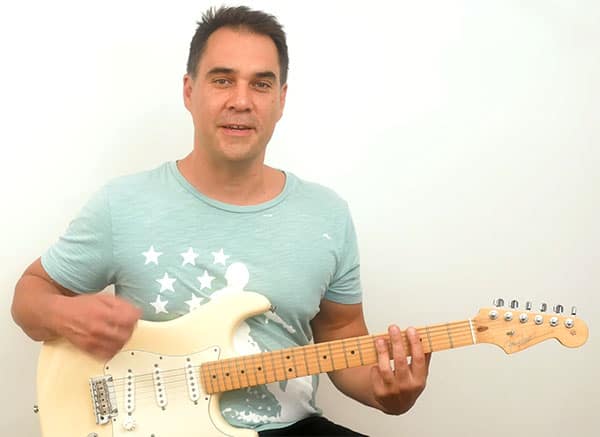
Keep in mind that nobody was born with a guitar in their hands playing it perfectly out of the womb Every single guitarist you love listening to was a beginner at one time. They struggled with barre chords, and with all the theory. But they practiced diligently and eventually got where they are today.
You set your own goals. You don't need to become the next Eric Clapton, but trust me, you will be able to play all his songs soon. How soon exactly? Well, that really depends on how much effort you put into it.
With the information in this guide, you are now equipped to start learning and advancing at the guitar. As I've said many times, practice, and you'll get there. If you have any questions or comments, please feel free to write me, or leave a comment on the lesson pages.

